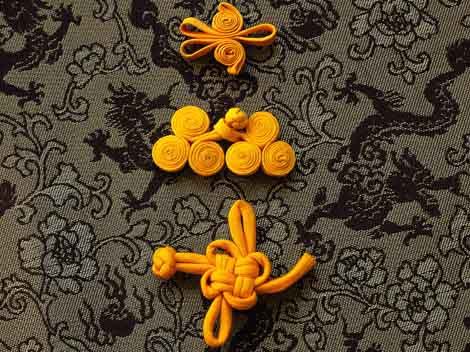
The Chinese knot is a traditional auspicious knot artwork made by plaiting a string into a knot of diversified shapes. As a clasp made by plaiting cloth strips, the buckle knot is used in traditional garments such as Tang suit and cheongsam. Both Chinese knots and buckle knots are of artistry and practicability.
The Chinese knot and buckle knot have become a symbol of China with their uniqueness and profound cultural connotations. Derived from the phenomenon of "keeping records by tying knots" prevalent in the primitive age, the "knot" contained in it a legal representation of "Contract" and therefore was of great significance. It was widely applied to fix garment, ornaments and seals in the Tang and Song Dynasties. In the Ming and Qing Dynasties, it was prevailing and divided into two types: auspicious hanging decorations and weaved trappings. Auspicious hanging decorations (known as "Chinese knot" currently) were customarily used on religious occasions to ward off misfortunes, while weaved trappings were of various types including buckle knot. Different knots are endowed with different meanings. For example, the interlink palindrome-type "Truelove Knot" plaited with brocade ribbons symbolizes mutual love and living to old age in conjugal bliss. These knots are also an embodiment of people's pursuit of truth, goodness and beauty. Meaning expression with knots can be seen in poems and classical Chinese writings such as Book of Songs, Rhapsody on Chu and Han Yuefu (a style of poems during the Han dynasty, collected by the Bureau of Music).
The Chinese knot art in modern times is still endowed with peculiar enchantment. Chinese knots and buckle knots are used as adornments for houses and cheongsams and serve as a symbol of beauty and blessing.
We recommend:
